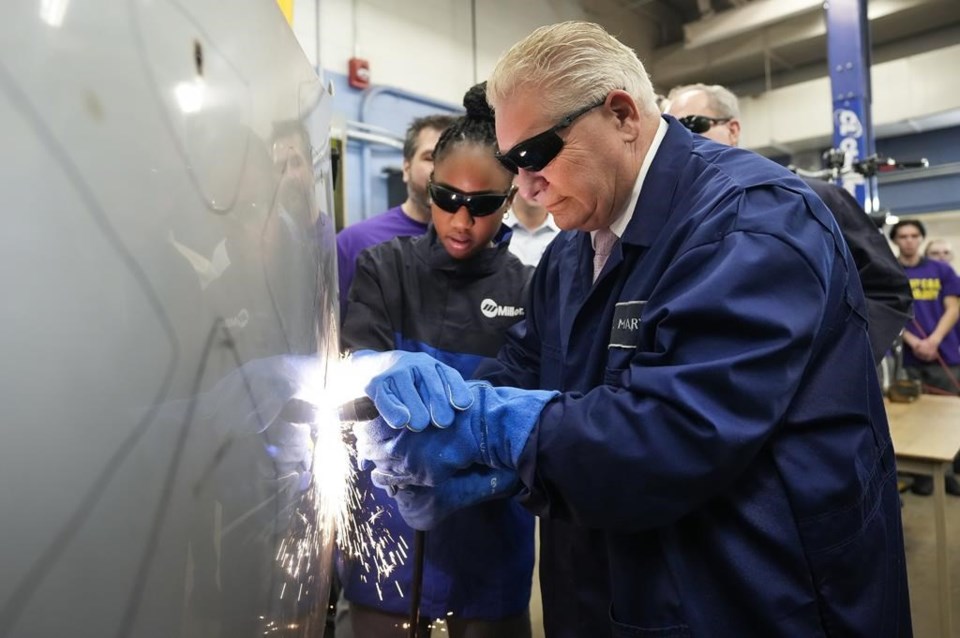Ontario's budget will include $224 million more to build and upgrade training centres, Premier Doug Ford announced Tuesday, part of a push to boost the skilled trades as the government plans major hospital, highway and home building.
Applications for a new Skills Development Fund capital stream are set to open in the late spring for groups including unions, businesses, industry associations and Indigenous centres to build new training centres, or upgrade or convert existing facilities.
Ontario also plans to spend $75 million more over the next three years to support operations at those centres. It's part of the province's $1.5-billion skilled trades strategy, Ford announced Tuesday in Vaughan, Ont.
"With this new funding...we're taking steps to create a bigger pipeline of talent to ensure we continue to have the best workforce in the world to keep attracting investments and build Ontario," he said, pointing in particular to a recent announcement that Volkswagen will build its first overseas electric vehicle battery cell plant in St. Thomas, Ont.
"Over the next decade, we're going to need thousands of new skilled construction workers to help build the infrastructure our growing population needs, including the factories we were just talking about, highways, new homes, public transit, schools and hospitals."
Ontario's next budget is set to be tabled Thursday and is expected to lean heavily on a consistent building theme from the Ford government. Last year's budget said the government planned $158 billion in infrastructure spending over 10 years, including a vast amount of road-building and hospital construction announcements.
Since then, the government has been taking a number of steps toward a goal of building 1.5 million homes in 10 years - including, controversially, opening up some of the protected Greenbelt lands to housing development.
Ontario is facing a "historic labour shortage," said Labour Minister Monte McNaughton.
"Today, nearly 300,000 jobs are going unfilled, costing our economy billions in lost productivity, and lost opportunities for workers and jobseekers," he said Tuesday.
"In construction alone we'll need 100,000 skilled workers over the next decade due to retirements and job growth. That is why our government is pulling out all the stops to help workers gain in-demand skills."
Meanwhile, the province's Financial Accountability Office released a labour market report Tuesday, saying that both job creation and long-term job vacancies are at record levels.
Ontario's employment rose by 338,300 jobs in 2022, and when combined with job gains in 2021, it marks the strongest two-year period on record, the FAO said.
While the job creation numbers were strong, and largely in full-time positions, Ontarians' wages did not keep pace with inflation, the report found. The average hourly wage increased 4.2 per cent to $32.94 in 2022, below the 6.8 per cent inflation rate.
Average wage growth for male workers at five per cent outpaced female workers' wage growth, at 3.3 per cent, the report said.
The fiscal watchdog also said that 36.3 per cent of all job vacancies in the third quarter of 2022 were positions that had been unfilled for 90 days or more, the highest on record.
Jobs in trades, transport, equipment operators and health had the highest proportion of long-term vacancies, the report said.
This report by The Canadian Press was first published March 21, 2023.
Allison Jones and Liam Casey, The Canadian Press



